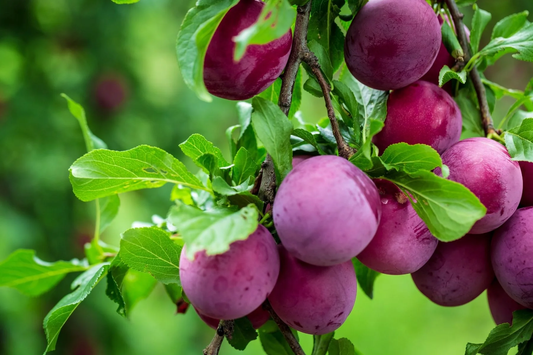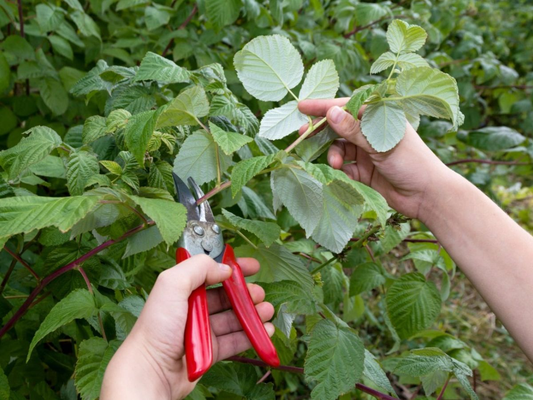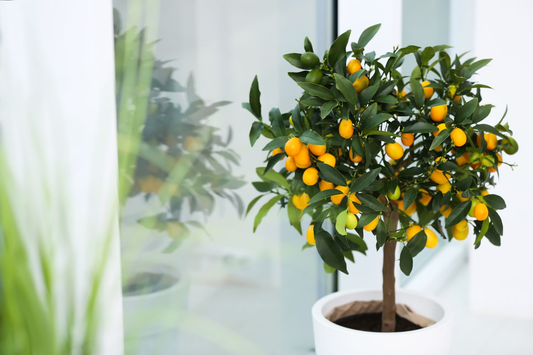Apartment Gardening Made Easy: How to Start a Raised Garden Indoors on a Budget
Share
Table of Contents
1. Introduction to Indoor Raised Gardens
In recent years, the popularity of indoor gardening has surged, especially among apartment dwellers who lack outdoor garden space. Indoor gardening offers a unique way to bring greenery into your living space, grow fresh produce, and connect with nature, all from the comfort of your home. One of the best ways to maximize limited space and maintain control over your garden environment is through raised gardens indoors. Whether you’re an experienced gardener or a beginner, indoor raised gardens provide a practical solution for apartment gardening that is both manageable and affordable.
1.1 Overview
Indoor gardening, particularly in raised beds, has become a popular trend for several reasons:
- 🌿 Limited Outdoor Space: For apartment dwellers, outdoor gardening space can be non-existent, making indoor gardening a practical alternative.
- 🌞 Control Over Conditions: Raised gardens allow you to manage light, soil quality, and water levels more effectively than outdoor gardens.
- 🏡 Health Benefits: Indoor gardening promotes a healthy lifestyle by providing fresh produce and an indoor connection to nature.
1.2 Why Choose Raised Gardens Indoors?
Choosing a raised garden for your indoor gardening setup has multiple advantages, especially in an apartment setting:
- Compact and Space-Saving: Raised gardens make efficient use of small spaces and can be customized to fit balconies, windowsills, or any available area in your apartment.
- Control Over Soil Quality: Raised beds let you add the specific soil mix best suited for your plants, improving the likelihood of success for your indoor garden.
- Reduced Pest Issues: Indoor raised gardens often face fewer pest problems than outdoor gardens, making maintenance simpler and minimizing the need for chemical treatments.
- Accessibility: Raised beds are easier to tend to, as they bring the plants closer to your level, reducing strain on your back and knees.
1.3 Budget-Friendly Tips
Indoor raised gardening can be surprisingly affordable, especially if you follow these budget-friendly tips:
- 🛠️ DIY Containers: Use repurposed items such as storage bins or wooden crates as cost-effective raised garden containers.
- 🌱 Cost-Effective Soil Mix: Create a DIY soil blend using a mix of compost, coconut coir, and perlite for a nutritious and budget-friendly soil alternative.
- 💡 Low-Cost Lighting Solutions: Opt for LED grow lights, which are energy-efficient and affordable, especially for small indoor gardens.
- 🪴 Choose Easy-to-Grow Plants: Begin with low-maintenance plants like herbs or leafy greens, which thrive indoors and don’t require a lot of extra care.
- 🪑 Maximize Vertical Space: Use shelves or wall-mounted planters to expand your growing area without taking up floor space.
By choosing budget-friendly options for your raised garden setup, you can create a thriving indoor garden that fits your apartment lifestyle and provides fresh produce or beautiful greenery year-round. Indoor raised gardening is an affordable, accessible, and rewarding way to bring nature into any space, no matter the size or budget.

2. Benefits of Starting a Raised Garden Indoors
Creating a raised garden indoors offers numerous benefits, making it a practical and rewarding choice for apartment dwellers. From providing a convenient source of fresh produce to enabling complete control over growing conditions, indoor raised gardens transform small spaces into productive green areas.
2.1 Fresh Produce at Your Fingertips
- 🥗 Convenience: Grow fresh vegetables, herbs, and greens right in your apartment. There’s nothing more satisfying than having homegrown ingredients ready to harvest whenever you need them.
- 🌱 Flavor & Nutrients: Indoor gardens allow you to pick produce at its peak, ensuring the best taste and maximum nutrient content.
- 💰 Cost Savings: Save money on groceries by growing commonly used items like basil, lettuce, and tomatoes.
2.2 Control Over Pesticides and Soil
- 🌍 Eco-Friendly: Raised gardens let you avoid harmful pesticides and opt for organic methods, contributing to a healthier home environment.
- 🌿 Soil Customization: Unlike outdoor gardening, indoor raised gardens allow you to use specific soil blends that best suit the plants you’re growing, improving growth and productivity.
- 🛠️ Reduced Pest Issues: Keeping plants indoors limits exposure to outdoor pests, reducing the need for pest control products.
2.3 Maximizes Limited Apartment Space
- 🏢 Space Efficiency: Raised garden beds are customizable, allowing you to create gardens in small spaces like balconies, windowsills, or shelves.
- 🪴 Vertical Growing Options: Use shelves or wall-mounted planters to expand your garden without taking up valuable floor space.
- 🔄 Flexibility: Indoor raised gardens are portable and can be relocated easily to adjust for lighting or space requirements.
2.4 Year-Round Gardening Opportunities
- 🌞 Seasonal Independence: Indoor raised gardens allow you to grow plants regardless of outdoor weather conditions, providing fresh produce all year.
- 💡 Use of Grow Lights: Incorporating grow lights makes it possible to simulate sunlight, so plants thrive even during shorter winter days.
- 🌿 Extended Harvests: Many indoor gardeners can harvest leafy greens, herbs, and small vegetables continuously, ensuring a steady supply of homegrown produce.
Starting a raised garden indoors brings a wealth of benefits, from having fresh produce within reach to transforming limited spaces into thriving green areas. This type of garden makes it possible to control every aspect of plant care, giving you a sustainable, convenient, and enjoyable way to grow indoors.
3. Choosing the Right Space for Your Indoor Raised Garden
One of the first steps in starting an indoor raised garden is finding the perfect space for it within your apartment. Choosing the right location ensures your plants get the proper light, temperature, and humidity, which are essential for thriving indoor gardens. This section will guide you through assessing light availability, understanding temperature and humidity needs, and positioning your garden effectively.
3.1 Assessing Light Availability
Light is a crucial factor for indoor gardens, as plants need varying levels of light to grow and thrive. Here’s how to evaluate and optimize light for your indoor raised garden:
- 🌞 Direct Light: Spaces near south-facing windows typically offer direct sunlight, ideal for sun-loving plants like tomatoes, peppers, and basil.
- 🌤️ Indirect Light: East or west-facing windows provide indirect light, which is softer and works well for leafy greens, herbs, and low-light plants.
- 💡 Artificial Lighting Options: If natural light is limited, consider using LED grow lights. These lights mimic sunlight and can be customized for different types of plants, allowing your garden to flourish even in darker areas.
3.2 Temperature and Humidity Considerations
Indoor plants generally thrive in a moderate temperature and humidity range. Ensuring a stable environment will help keep your garden healthy:
- 🌡️ Ideal Temperature Range: Most indoor plants do well in temperatures between 65°F and 75°F (18°C to 24°C). Avoid placing plants near heaters, air conditioners, or drafty windows.
- 💧 Humidity Levels: Indoor plants benefit from moderate humidity levels, typically around 40-60%. For drier environments, consider using a humidifier or placing a water tray near the plants to increase moisture levels.
- 🌬️ Avoid Extreme Temperature Fluctuations: Sudden changes in temperature, especially during winter, can stress plants. Keep your garden away from direct airflow from vents.
3.3 Positioning Your Raised Garden
Careful positioning of your raised garden helps maximize its lifespan and ensures it remains undisturbed in your living space. Here are some placement tips:
- 🚶 Avoid High-Traffic Areas: Place your raised garden in a quieter part of the room to prevent accidental bumping or disturbance, which can harm delicate plants.
- 🛡️ Protect Your Floors: Use a waterproof mat or tray under the raised garden to protect your floors from potential water leakage or soil spills.
- 🪑 Consider Accessibility: Position the garden within easy reach so you can comfortably water, prune, and harvest without strain.

4. Selecting Budget-Friendly Materials for Building a Raised Garden
Creating an indoor raised garden doesn’t have to be costly. With a few budget-friendly choices, you can set up a functional and attractive raised garden that suits your space and keeps expenses low. This section covers affordable container options, cost-effective soil mixes, and practical drainage solutions for your indoor garden.
4.1 Container Choices on a Budget
Choosing the right container is crucial, as it serves as the base for your raised garden. Fortunately, there are plenty of affordable options available:
- ♻️ Repurposed Containers: Repurposing household items like storage bins, plastic buckets, or even wooden crates makes for a budget-friendly and eco-conscious choice. Ensure that these containers are deep enough (at least 6-12 inches) to accommodate your plant roots.
- 🛠️ Affordable Raised Garden Kits: Ready-made raised garden kits are available in stores and online, with prices varying based on size and material. Look for kits made of recycled plastic or untreated wood for an affordable, durable option.
- 💡 DIY Options: Building your own raised garden using scrap wood, cinder blocks, or reclaimed materials can be an affordable alternative. Not only does this reduce costs, but it also allows you to customize the size and shape of your garden.
4.2 Soil Selection and Cost-Effective Soil Mixes
The right soil is essential for a successful raised garden. Here are some options and tips for creating a budget-friendly soil mix:
- 🌱 Recommended Soil Types: Opt for a high-quality potting mix designed for vegetables and herbs. If possible, select a lightweight mix to make it easier to move containers indoors.
- 🧪 DIY Soil Blend Recipe: Mix equal parts of compost, coconut coir (or peat moss), and perlite or vermiculite for a cost-effective and nutrient-rich soil blend. This DIY mix is great for raised beds as it retains moisture and drains well.
- 💰 Cost Savings: Purchasing soil components in bulk or sourcing compost from local farms or community gardens can further reduce costs.
4.3 Drainage Solutions for Indoors
Proper drainage is vital for indoor gardens to prevent waterlogging and root rot. Here’s how to create effective drainage on a budget:
- 🚰 Importance of Drainage: Without adequate drainage, excess water can accumulate in containers, leading to root rot and poor plant health. Drainage is especially critical indoors, where evaporation is slower.
- 🔧 Ways to Add Drainage: Drill holes in the bottom of containers to allow excess water to escape. Place a saucer or tray beneath the container to catch any runoff and protect your floors.
- 🪨 Low-Cost Drainage Layers: For an extra layer of drainage, add pebbles, small stones, or broken clay pots to the bottom of your container before adding soil. This helps keep roots elevated and allows water to flow freely.

5. Choosing Plants Suitable for Indoor Raised Gardens
Selecting the right plants for your indoor raised garden is essential to ensure they thrive in an indoor environment. Certain plants are better suited for limited light and space, making them ideal for apartment gardening. This section covers herbs, leafy greens, small vegetables, and ornamental flowers that do well in indoor raised gardens.
5.1 Herbs
Herbs are perfect for indoor raised gardens due to their compact size and adaptability. They also add fresh flavors to your cooking!
- 🌿 Basil: A versatile herb that grows well with minimal light. Regularly prune for bushier growth.
- 🌱 Mint: Hardy and fast-growing, but keep it contained as it can spread quickly.
- 🍃 Thyme: Requires minimal care and can thrive with low to medium light.
5.2 Leafy Greens
Leafy greens are easy to grow indoors and provide a continuous supply of fresh, nutritious leaves.
- 🥬 Spinach: Thrives in low to medium light and can be harvested continuously.
- 🥗 Kale: Hardy and resilient, kale is a nutrient-rich option that grows well in containers.
- 🥬 Lettuce: Quick-growing and easy to harvest, lettuce varieties like butterhead and romaine do well indoors.
5.3 Small Vegetables
Certain small vegetables can be successfully grown indoors with the right conditions. These add variety and color to your raised garden.
- 🍅 Cherry Tomatoes: Requires medium to high light and some support as they grow. Look for dwarf varieties for compact spaces.
- 🌶️ Peppers: Small pepper varieties, such as mini bell peppers, thrive indoors and add vibrant colors to your garden.
5.4 Flowers and Ornamentals
Adding flowers or ornamental plants can bring beauty to your indoor garden, enhancing your space with color and greenery.
- 🌸 Begonia: A beautiful, low-light flower that adds color to indoor spaces.
- 🪴 Peace Lily: A popular choice for low-light areas, peace lilies also help improve indoor air quality.
Table of Recommended Plants for Indoor Raised Gardens
| Plant Type | Varieties Suitable Indoors | Light Requirements | Growth Tips |
|---|---|---|---|
| Herbs | Basil, Mint, Thyme | Low to Medium | Prune regularly to encourage growth |
| Leafy Greens | Spinach, Kale, Lettuce | Low to Medium | Harvest often for continuous growth |
| Small Vegetables | Cherry Tomatoes, Peppers | Medium to High | Provide support for stems |
| Flowers | Begonia, Peace Lily | Low | Water moderately and avoid direct sunlight |
6. Setting Up and Assembling Your Raised Garden Indoors
Setting up your indoor raised garden is an exciting part of the process. With a few steps, you can build, fill, and plant your garden efficiently and affordably. This section provides a step-by-step guide to assembling the structure, adding soil, and planting seeds or seedlings.
6.1 Building or Assembling the Raised Garden Structure
Follow these steps to create a sturdy raised garden bed for your indoor garden:
- 🧰 Choose a Location: Select an area with adequate light, enough space for your garden, and easy access for watering and maintenance.
- 🔨 Gather Your Materials: Whether using a pre-made kit or DIY materials like wooden planks or plastic containers, ensure all components are ready for assembly.
- 🔩 Assemble the Bed:
- 📏 DIY Option: Build a simple rectangular frame by connecting wooden boards with screws. Ensure it is at least 6-12 inches deep for plant roots.
- 🛠️ Pre-made Kit: Follow the manufacturer’s instructions to assemble the bed, ensuring all parts fit snugly together.
- 🧼 Prepare the Interior: Line the bottom with a waterproof liner or landscape fabric to protect floors and prevent soil from spilling.
6.2 Adding the Soil Mix
Once the structure is ready, it’s time to add the soil. Here’s how to fill your raised bed effectively and affordably:
- 💸 Cost-Effective Soil Mix: Use a DIY mix of compost, coconut coir, and perlite or vermiculite. This blend provides moisture retention and drainage.
- 🌍 Layering Technique: For extra nutrients, add a base layer of organic compost followed by the DIY soil mix. Layering helps improve drainage and prevents soil compaction.
- 🌱 Fill Evenly: Fill the bed to about an inch below the top to allow space for water and avoid soil spilling over.
6.3 Planting Seeds or Seedlings
With the soil in place, you can begin planting your seeds or seedlings. Here’s how to arrange them efficiently in a compact raised bed:
- 📐 Plan Your Layout: Use a grid system to maximize space. Divide the bed into small squares, dedicating each square to a different plant.
- 🌿 Choose Your Plants: Opt for compact varieties that won’t crowd each other, such as herbs, leafy greens, and small vegetables.
- 🌱 Planting Depth: Plant seeds or seedlings according to the depth recommended on the seed packet. Shallow-rooted plants can be closer to the surface, while deeper-rooted plants need to be planted lower.
- 💧 Water Gently: After planting, water the soil gently to avoid disturbing the seeds or seedlings. Use a spray bottle or a watering can with a fine nozzle for a gentle, even application.

7. Lighting Options for Indoor Gardens on a Budget
Proper lighting is essential for the success of an indoor raised garden, especially when natural light is limited. This section covers affordable grow light types, budget-friendly options, and tips on optimal light placement.
7.1 Types of Grow Lights
Different types of grow lights suit various plant needs, but some are more cost-effective than others. Here’s a comparison of common types:
| Type | Pros | Cons |
|---|---|---|
| LED |
|
|
| Fluorescent |
|
|
| Incandescent |
|
|
7.2 Budget-Friendly Light Choices
To set up indoor garden lighting on a budget, consider the following options:
- 🛒 Affordable LED Bulbs: Look for budget-friendly LED grow lights, which provide good light quality and use less electricity.
- 💡 Compact Fluorescent Lights (CFLs): CFL bulbs are an inexpensive choice that fits standard light fixtures and works well for leafy plants.
- 💡 Clip-on Lamps: Clip-on lights are flexible, allowing you to position them close to plants without needing additional stands.
7.3 Placement of Lights
Positioning your lights correctly is key to ensuring plants get enough light without causing burns. Follow these guidelines:
- 📏 Distance: Place LED lights about 12–24 inches above plants. CFLs should be closer, around 6–12 inches.
- ⏱️ Duration: Most indoor plants benefit from 12–16 hours of light per day. Use a timer for consistent lighting, which helps plants maintain a healthy growth cycle.
- 🌞 Adjust as Needed: Observe your plants and adjust the distance or duration based on their response. Pale or leggy growth indicates a need for more light, while browning suggests lights are too close.
8. Maintaining Your Indoor Raised Garden
Proper maintenance is essential for the success of your indoor raised garden. This section covers essential practices for watering, fertilizing, pest management, and pruning, all tailored to the indoor environment.
8.1 Watering Techniques
Overwatering is a common issue in indoor gardens, where drainage can be limited. Follow these tips to keep your plants hydrated without risking root rot:
- 💧 Check Soil Moisture: Use your finger to check moisture levels before watering. The top inch of soil should feel dry before you water again.
- 🌡️ Adjust for Indoor Conditions: Indoor plants often need less water than outdoor ones due to lower evaporation rates. Water only when necessary.
- 🪣 Water from the Bottom: Place containers in a shallow tray of water and allow plants to absorb moisture from the bottom, reducing the risk of overwatering.
8.2 Fertilizing on a Budget
Indoor plants benefit from regular feeding, but costly fertilizers aren’t the only option. Here are some affordable alternatives:
- 🍂 Compost Tea: Make your own liquid fertilizer by steeping compost in water for a few days, then using it to water your plants.
- 🥚 Eggshells and Coffee Grounds: Crushed eggshells provide calcium, while used coffee grounds add nitrogen. Sprinkle these in small amounts on the soil surface.
- 💲 Low-Cost Fertilizer Options: Look for affordable, slow-release organic fertilizers designed for indoor plants, available at most garden centers.
8.3 Managing Pests Indoors
Indoor plants can attract pests like aphids and fungus gnats. Use these budget-friendly methods to keep pests under control:
- 🪴 Neem Oil Spray: Mix neem oil with water for a natural pesticide that controls a variety of pests.
- 🌿 DIY Soap Solution: Combine a few drops of dish soap with water and spray affected plants to deter pests.
- 🌼 Sticky Traps: Place yellow sticky traps near plants to catch flying insects like fungus gnats.
8.4 Pruning and Harvesting Tips
Regular pruning helps promote healthy growth and keeps your plants manageable indoors. Here are a few key tips:
- ✂️ Prune Regularly: Trim off dead or yellowing leaves to prevent disease and improve airflow around plants.
- 🌱 Harvest Often: For herbs and leafy greens, frequent harvesting encourages plants to produce new growth.
- 🌳 Use Clean Tools: Always use clean, sharp scissors or pruners to avoid spreading disease among plants.
9. Troubleshooting Common Issues in Indoor Raised Gardens
Even with the best care, indoor raised gardens can face challenges. Here are some common problems and their solutions to keep your garden flourishing.
9.1 Dealing with Limited Sunlight
Plants that don't receive enough sunlight may stretch towards the light source or have pale leaves. Here's how to fix this:
- ☀️ Increase Light Exposure: Move plants closer to windows or add grow lights to supplement natural light.
- 🌿 Prune Stretched Plants: Trim any leggy growth to encourage more compact and healthier growth.
- 💡 Rotate Plants Regularly: Turn plants every few days to ensure they receive even light from all sides.
9.2 Solving Watering Problems
Watering issues are common in indoor gardens. Here's how to identify and correct the signs:
- 💧 Signs of Overwatering: Yellowing leaves, soggy soil, and root rot. Ensure your pots have proper drainage and adjust watering schedules.
- 🌱 Signs of Underwatering: Wilting leaves, dry soil, and slow growth. Increase watering frequency, but ensure water drains well.
9.3 Tackling Common Pests and Mold
Indoor plants can attract pests and mold. Here are quick fixes for common issues:
- 🪰 Aphids and Fungus Gnats: Use neem oil or insecticidal soap to treat affected plants.
- 🍄 Mold on Soil Surface: Remove the top layer of soil, allow the surface to dry out, and improve ventilation around plants.
10. Budget Comparison of DIY vs. Store-Bought Raised Garden Kits
When setting up an indoor raised garden, one of the key decisions is whether to go for a DIY approach or buy a pre-made raised garden kit. Each option has its advantages and drawbacks, which can affect your budget and gardening experience. Below is a comparison of the costs and pros/cons of each option.
Cost Comparison of DIY Raised Garden vs. Pre-Made Kits
| Option | Average Cost Range | Pros | Cons |
|---|---|---|---|
| DIY Raised Garden | $20 - $50 | Customizable, cheaper | Time-consuming |
| Store-Bought Kits | $40 - $150 | Convenient, easy to assemble | Higher upfront cost |
| Repurposed Containers | $0 - $15 | Very affordable, eco-friendly | May lack aesthetic appeal |
Depending on your budget, time constraints, and aesthetic preferences, any of these options can help you get started with your indoor raised garden. DIY options are cost-effective and customizable, while store-bought kits offer convenience at a higher cost. Repurposed containers provide the most affordable solution but may not have the polished look of other options.

11. Final Tips for Successful Indoor Raised Gardening
To ensure your indoor raised garden thrives, here are some final tips that can help you along the way.
11.1 Start Small and Scale Up
- 🌱 Start with a few plants: Begin with a small garden and gradually add more plants as you gain experience.
- 🌿 Learn the basics: Start with easy-to-grow herbs and greens to build confidence before expanding to more complex plants.
11.2 Keep Learning and Experimenting
- 📚 Educate yourself: Continuously learn about different plant varieties and gardening techniques to improve your indoor gardening skills.
- 🔬 Experiment with new approaches: Try different planting arrangements, lighting setups, and soil mixes to find what works best for your plants.
11.3 Make the Most of Available Space
- 🏠 Use vertical space: Incorporate shelving or hanging planters to maximize growing area in your apartment.
- 🌻 Utilize corners and windowsills: Even the smallest areas can support a thriving indoor garden with the right planning.
12. Frequently Asked Questions (FAQ)
Here are answers to some of the most common questions about setting up and maintaining an indoor raised garden:
1. What are the best plants for an indoor raised garden in low light?
Some great plants for low light conditions include herbs like mint, thyme, and basil, as well as leafy greens like spinach and lettuce. These plants thrive with minimal sunlight and can still produce healthy yields indoors.
2. Can I build an indoor raised garden without using grow lights?
Yes, it's possible to grow plants indoors without grow lights, especially if you have access to natural sunlight. However, in areas with limited sunlight, grow lights can help support healthy plant growth, especially in winter months.
3. How often should I water plants in an indoor raised garden?
Watering frequency depends on the plant type and environmental conditions. Typically, indoor plants should be watered when the top inch of soil feels dry. Be cautious not to overwater, as it can lead to root rot.
4. What are the most budget-friendly materials for setting up an indoor raised garden?
Repurposed containers such as old bins or buckets are cost-effective. Additionally, DIY raised garden kits can be affordable, and using a simple soil mix of compost, peat, and perlite can keep costs down.
5. Are there any plants that should not be grown indoors in a raised garden?
Plants that require full sun, such as large fruiting vegetables (e.g., corn or pumpkins), may not thrive indoors due to limited light. It's best to choose plants suited for indoor environments, like herbs, leafy greens, and compact vegetables.
Additional Resources
15 Best Plants for Growing Indoors That Will Make You Fall in Love wit – XRoci
Say Goodbye to Wilted Cacti: Master How to Care for Indoor Cactus Plan – XRoci
Mango Magic: How to Plant Mango Seeds and Harvest Juicy Fruit at Home! – XRoci
Plant Your Own Herbs! Here’s the Scoop on the Best Seeds for Starting – XRoci




